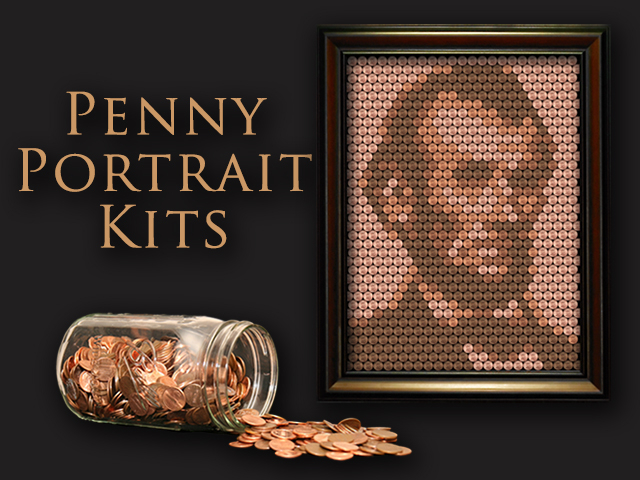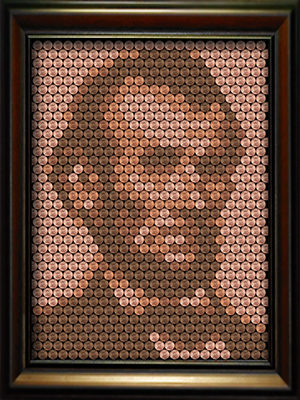“So sir, how many posters do you want to order?”
This was probably the single hardest question I faced when starting this crazy little side project. I had already created the 18×24 poster image and printed out a sample MVP (Minimum Viable Product). To print out one poster cost about $30, but it was just going to be used as a proof of concept to make sure that this crazy idea worked. In order for this to be a profitable business, I needed to get the price of each poster way down, and that meant ordering in bulk.
So, how does one estimate how many people want portraits of Abe Lincoln made out of pennies hanging on their wall? I knew my mom would want one, so that was a start, but beyond that my guesstimate got fuzzy. I of course, thought they were pretty cool, but I also like magic and bonsai trees, so I’m probably not exactly the best predictor of mass market demands.
Up until this point, I had sunk maybe a hundred or so dollars into this side venture. Just to send my poster to the industrial printer, however, was going to cost upward of $500 in setup charges. My little crazy side hustle just got real!
If I recall correctly, the first 1,000 posters were going to cost me about $900, and 2,000 posters would be $1,200. I had no idea how much space 2,000 posters would take up, but I figured if I was doing this thing I was doing it and opted to go with 2,000. Worst case scenario I could hide them under the beds throughout my house. It worked out well, and thankfully, there was demand for this wacky little project. It took a while, but after a year or so I was getting close to the end of my print run.
Enter Kickstarter
The launch of Kickstarter significantly changed the way crazy ideas like mine get off the ground. People could create an MVP or proof of concept and use Kickstarter to gauge demand so they didn’t get stuck with…. oh… 1.6 million penny images under their bed.
I was super jealous that this hadn’t been around when I launched my product. As my print run was coming to an end, I decided I’d approach the Kickstarter community to see if I could help raise money (and interest) for my next round of posters. Kickstarter was making headlines and I thought I might be able to piggyback off the excitement.
The only way to really learn about doing a Kickstarter project is to do one. I was far from a social media master and didn’t have a giant twitter following I could reach out to. The video is a big part of any Kickstarter project and as I had a broadcasting/advertising degree so I knew I could handle that aspect of it. (Obligatory Kickstarter video below.)
Being from the Midwest, I’m pretty frugal with money and not the type of guy who would feel comfortable asking for a handout. One of the mistakes I made with this project was I wanted to reach my funding goal before spreading the word to any of my friends and family. I have such great friends, I knew a lot of them would buy one just to support me and my crazy adventures. I didn’t really want anyone to feel obligated to do that. Once I hit my funding goal, I could feel comfortable spreading the word without feeling like I was asking for help.
In hindsite, this was the wrong approach. The initial interest in a Kickstarter project really determines where it will show up when people are searching the Kickstarter site, or who Kickstarter chooses to highlight on their front page. Projects with early momentum tend to “go viral” and really snowball. Now don’t get me wrong, my project did pretty well. I surpassed my goal and raised $1,874 for my second print run (2,500 units), but I kind of feel like it could have gone even better if I knew what I was doing.
That’s sort of the way business works though. You just keep stumbling forward and hope more good surprises happen than bad ones. Since then, I did another print run of 3,000 bringing the total number of Penny Portrait kits manufactured to 7,500! If everyone who orders a kit completes it that would be a total of $63,450 in pennies hanging on people’s walls.
Crazy little side project indeed…



Do you make custom size penny portrait kits? Please respond or email. I would appreciate if you did because I would like to order a custom kit if available. Thank you.